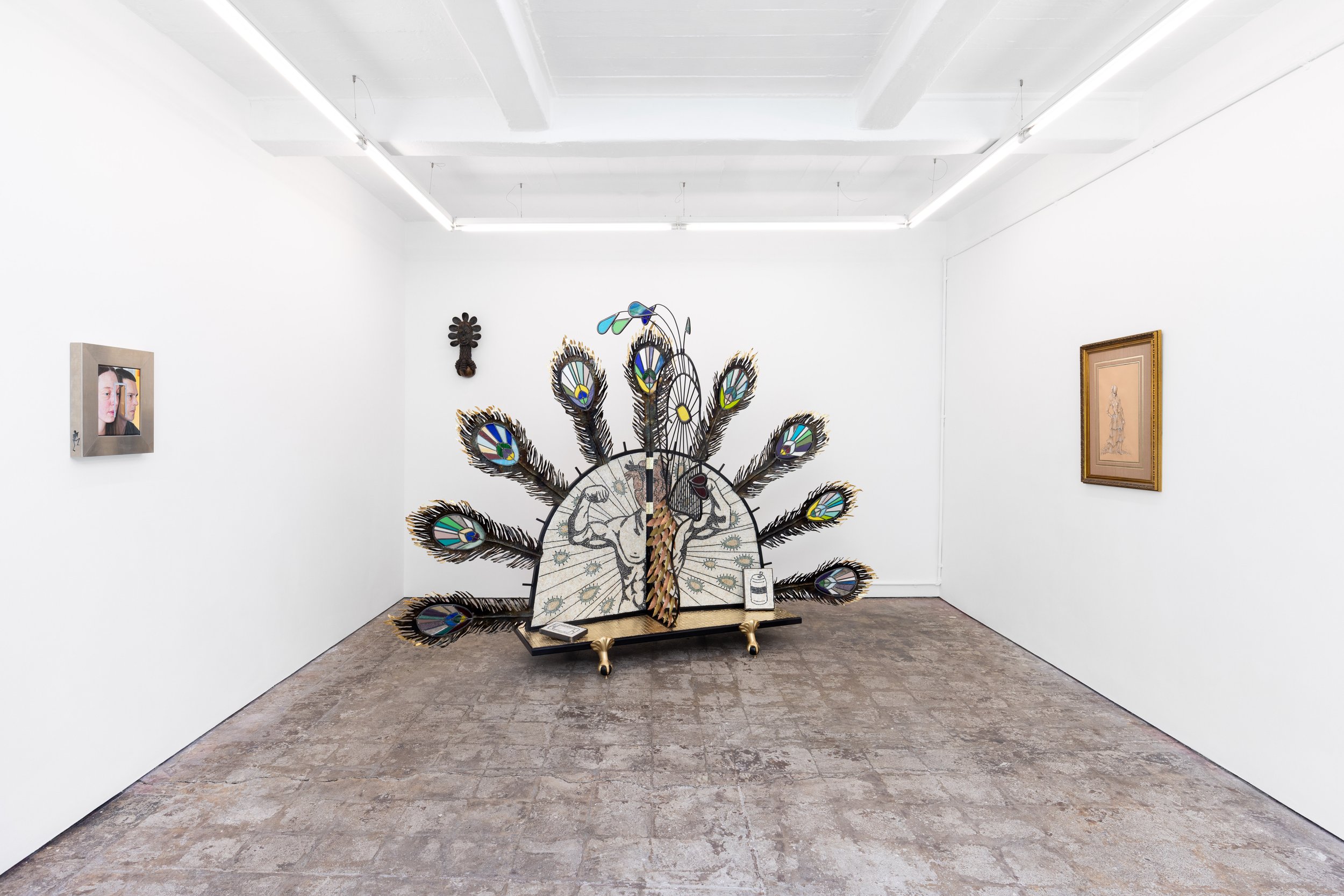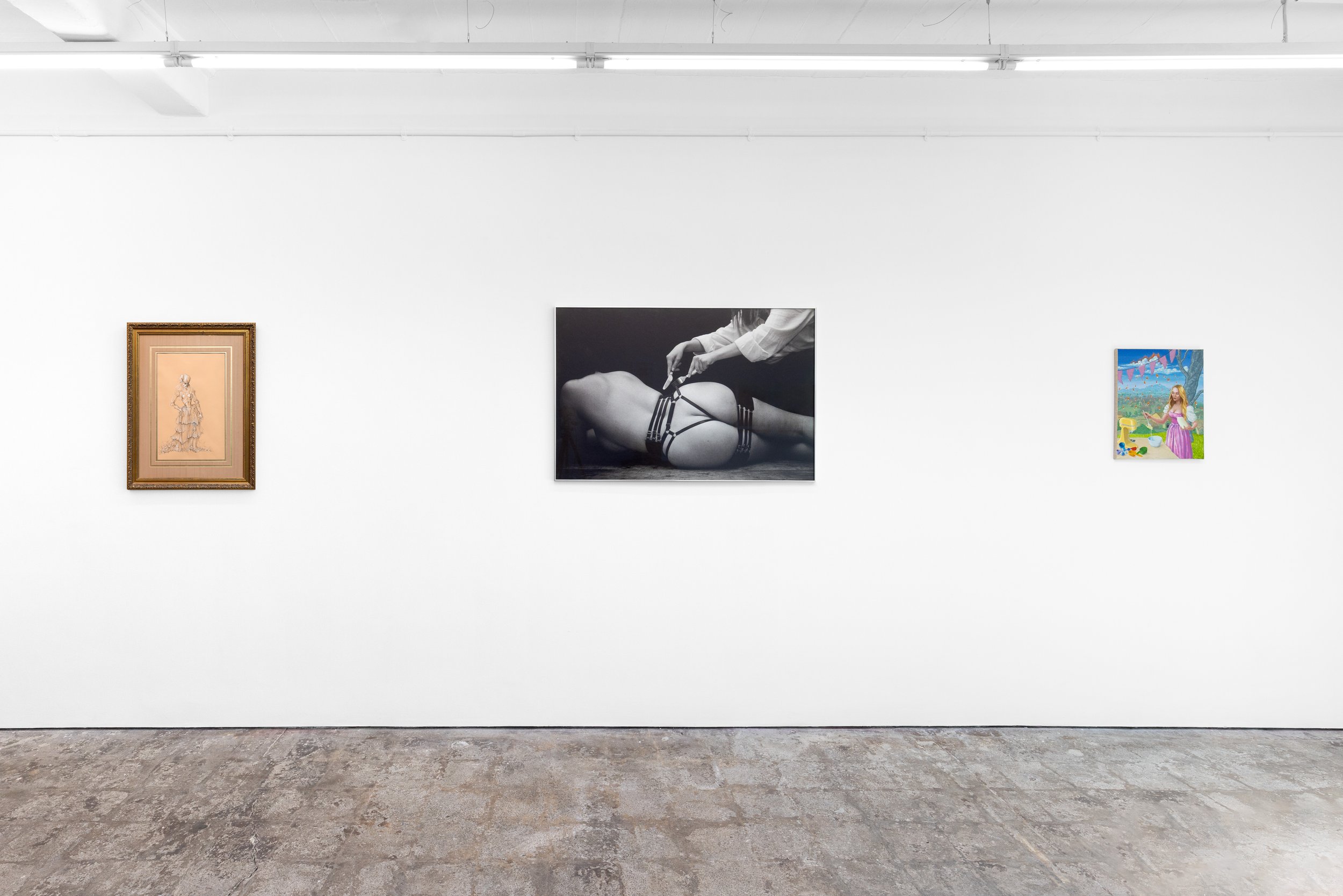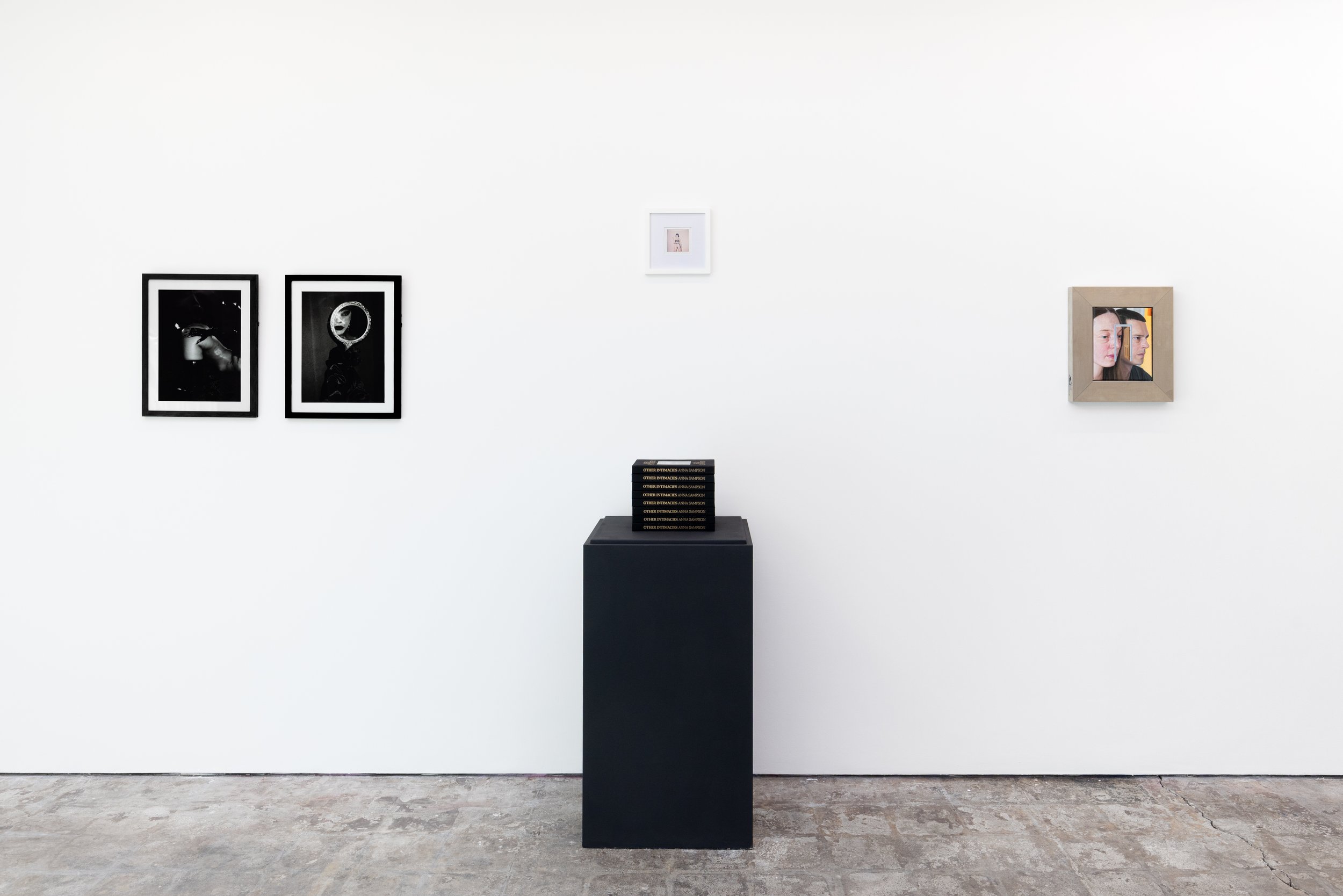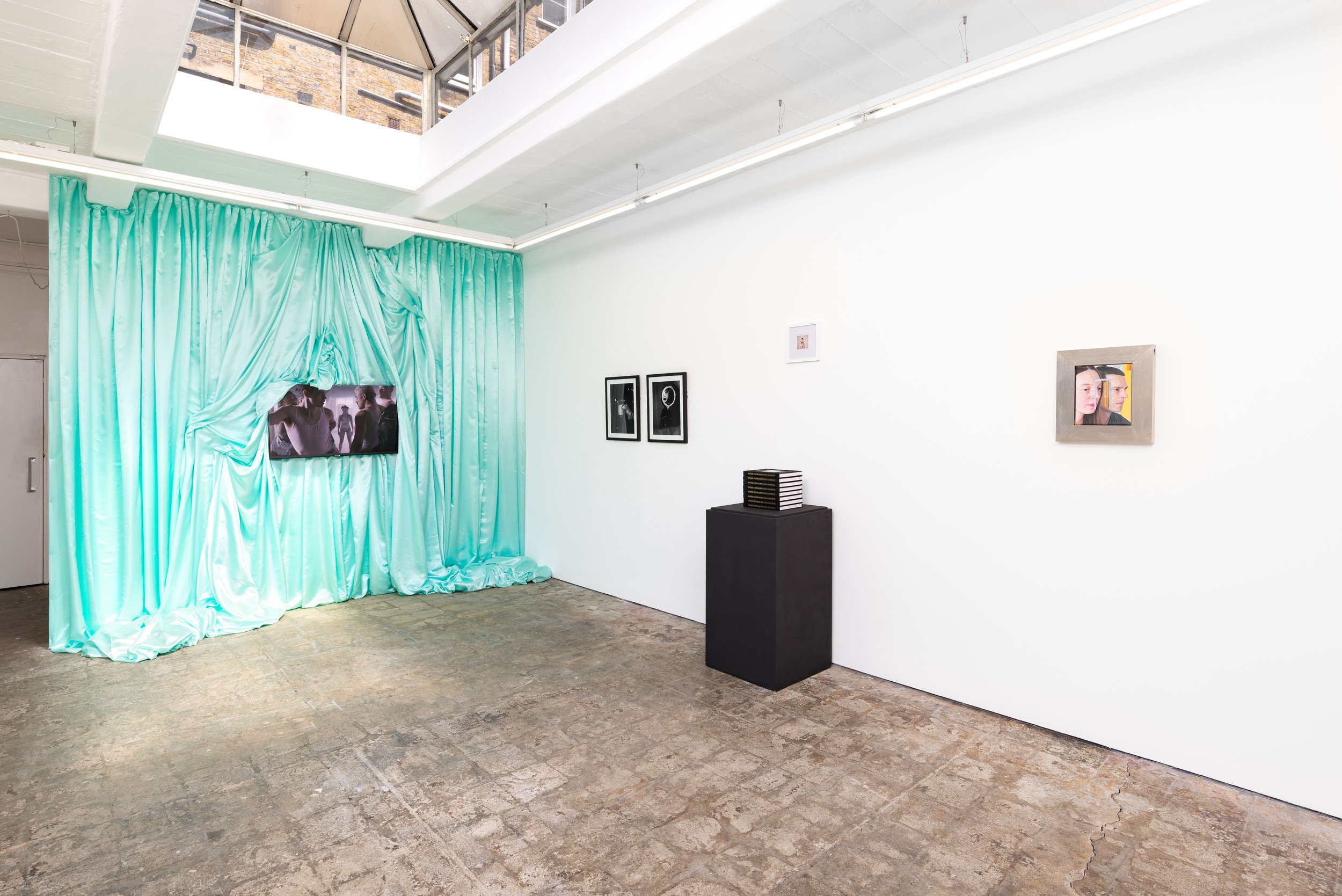‘Lady Lilith’
Thursday 12 June – Saturday 12 July 2025
ALICE BLACK, 7 Windmill St, London, W1T 2JD
Wednesday – Friday, 11am-5pm
Saturday 12pm – 4pm & by appointment.
For further information please contact: info@aliceblackgallery.com
ALICE BLACK is delighted to present Lady Lilith, a group exhibition that reexamines the enduring legacy of the 19th-century Aesthetic Movement and its influence on 20th-and 21st-century artistic practice - through a radical new lens.
Lady Lilith features a distinguished group of artists - Alexander Ekholm, Leonor Fini, Tristan Pigott, Anna Sampson, Katie Surridge, and Atalanta Xanthe - presenting a dynamic collection of works across painting, sculpture, photography, video, and works on paper.
The Aesthetic Movement (1860–1900), often narrowly defined by its devotion to beauty, was in fact a radical countercultural force. By championing the principle of art for art’s sake, it disrupted centuries of artistic convention, asserting that art need not serve moral, religious, or utilitarian purposes. This conceptual shift not only redefined the role of the artist but laid the groundwork for the idea that anything can be art - a notion that would catalyse the experimental spirit of modernism and postmodernism in the 20th & 21st Century.
Far from being merely escapist or decorative, Aestheticism was a deliberate rejection of dominant Victorian ideologies. It opposed rigid moral codes, institutional dogma, and prescriptive narratives, advocating instead for artistic autonomy, subjective experience, and aesthetic freedom. The movement celebrated sensory pleasure and imaginative expression, drawing inspiration from a rich tapestry of sources - including Greek antiquity, Renaissance art, medieval ornamentation, botany, mythology, the human body and the so-called "Orient."
The movement’s influence extended beyond image-making to modes of display and design. James McNeill Whistler’s Arrangement in White and Yellow (1883) is widely credited as the first "white cube" exhibition, presenting artworks in a sparse, unified space that broke from the cluttered salon-style hang of the Royal Academy. This minimalist approach remains a dominant - if contested - norm in contemporary exhibition- making, raising questions about access, neutrality, and the politics of display.
In today’s socio-political climate - marked by pandemics, ecological crisis, economic disparity, cultural backlash, and the accelerating presence of AI - there is a renewed interest in the sensual, the subversive, the handmade, the fantastical, and the immersive. Yet the central question remains: can aesthetics ever be truly apolitical? Or are they inevitably shaped by - and complicit in - the conditions from which they emerge?
Lady Lilith presents artists whose practices wrestle with these tensions, drawing on themes from queer theory, gender politics, and post-humanism to interrogate what beauty means today - and what it conceals.
INSTALLATION VIEWS






ARTISTS
ALEX EKHOLM
Alexander Ekholm (they/them) is a London based director and photographer. Ekholm graduated from University of the Arts London. Ekholm explores how beauty, gender, and the body are performed and perceived - honouring the fractured, the intimate, and the non-normative. Their lens lingers in spaces where fluidity, tenderness, and resistance coexist. Their ideas are translated through experimental video, analogue and digital photography, continuously evolving into an ongoing exploration of the physicality of movement and its embodiment within queerness. Their documentary photography embraces a raw, unfiltered approach, braided with an approachable and curious sensibility, attuned to the safe spaces they have been allowed to experience and be part of.
'Le Bal', directed by Ekholm, is a conceptual dance film exploring how gender constructs and societal ideals shape, limit, and echo through our efforts at true self-expression. With choreography by Alex Codd, interpersonal interaction takes centre stage as Le Bal examines the subtle endurance of convention and the ongoing struggle to unlearn what we’ve been taught to perform. The accompanying piece, 'FAUX PAS', serves as another crystallisation of the research behind Le Bal,similarly probing what we take for granted and what we deem acceptable. The 'ungendered' mint green colour and its subtle vulvic connotations reflect Alexander Ekholm’s desire to transcend gender altogether, while honouring the feminine - a constant source of inspiration in their work and personal life. Ekholm has been commissioned by Dazed, MUBI, Gay Times and more.
LEONOR FINI
Leonor Fini (1907–1996) was an Argentine-born, Italian-raised surrealist painter. Though often associated with the Surrealist movement, Fini maintained her independence, refusing to officially join the group led by André Breton. Fini’s work frequently centred on strong, mysterious women - often portrayed as sphinxes, witches, or priestesses - reclaiming the female form from the objectified roles typically seen in Western art. Her subjects conveyed both sensuality and dominance, challenging conventional representations of gender and sexuality. This unapologetic female gaze placed her in contrast with many of her male contemporaries.
Aside from painting, Fini was deeply involved in costume and set design for theatre and opera, and she was also a prolific writer and illustrator. Her flamboyant lifestyle, marked by a love of cats, masks, and elaborate clothing, echoed the surreal elegance of her artwork. She moved in elite artistic circles, forming friendships with Salvador Dalí, Max Ernst, Jean Cocteau, and other luminaries, while still maintaining her autonomy. Despite her significant contributions, Fini was long overshadowed in art history. However, recent scholarship and exhibitions have revived interest in her visionary work and subversive legacy. Leonor Fini remains a powerful figure whose life and art continue to inspire those drawn to the mystical, the sensual, and the defiantly unconventional.
TRISTAN PIGOTT
Tristan Pigott (b. 1990) is a British contemporary painter whose practice engages critically with the construction of identity and the psychosocial ramifications of digital culture. Based in London and formally trained at Camberwell College of Arts and the Royal College of Art, Pigott employs traditional oil painting techniques and sculptural interventions to interrogate the intersection of selfhood, media, and performativity in late capitalist society. Pigott’s work is situated within a broader discourse on the aesthetics of post-internet culture. His meticulously rendered compositions foreground the artifice of image-making, drawing attention to the mediation of lived experience through technology and visual culture. By invoking tropes such as reflective surfaces, gestural ambiguity, and spatial detachment, Pigott destabilises the viewer’s relationship to both subject and surface, complicating notions of authenticity, agency, and spectatorship.
His paintings serve as critical inquiries into the conditions of contemporary subjectivity, highlighting the entanglement of the corporeal and the virtual. Rather than presenting stable or resolved narratives, Pigott cultivates a visual language marked by irony, detachment, and ambivalence. Through this, he foregrounds the tensions inherent in contemporary modes of representation and self-perception. Pigott’s work has been included in institutional exhibitions and is held in private collections. His practice continues to contribute to contemporary dialogues around image politics, affect, and mediated realities.
ANNA SAMPSON
Anna Sampson is a London-based photographic artist who specialises exclusively in analogue processes, producing her work entirely through traditional darkroom techniques. She holds a Bachelor of Arts in Fine Art from Chelsea College of Arts (2015) and a Master of Arts in Gender & Sexuality from University College London (2021). Sampson’s practice explores complex intersections of identity, embodiment, and visual culture, and her work has been exhibited internationally.
Anna Sampson’s practice is rooted in a queer erotic gaze, using the body as a site to explore the intersections of performance, queerness, and resistance. Drawing deeply from personal experience and grounded in intersectional feminism, her work foregrounds those often marginalised by mainstream narratives. At its core, her artistic vision is a commitment to social justice and the creation of inclusive, celebratory spaces of desire. Sampson’s enduring focus on erotic portraiture, analogue darkroom processes, and the platforming of radical, othered beauty reflects a sustained dedication to reimagining visibility and representation.
In July 2024, she released her debut artist’s book, ‘Other Intimacies’ in collaboration with the Hayward Gallery. This limited-edition publication brings to light themes frequently sidelined in contemporary discourse - queer desire and intimacy, subversive expressions of gender, sex work, and the unapologetic, embodied exploration of self. Her photography has garnered critical attention and has been featured in prominent contemporary publications such as DAZED, i-D, AnOther, Purple Fashion, Gay Times, and The Face.
KATIE SURRIDGE
Katie Louise Surridge studied at the Slade School of Fine Art, graduating in 2010. That same year, she was selected as one of four finalists in Saatchi’s prestigious New Sensations competition. She went on to complete her master’s degree in fine art at Goldsmiths in 2022. Among her notable accolades are a bursary from the Royal British Society of Sculptors and the DARE Art Prize. In 2018, Surridge completed a three-year training program in traditional blacksmithing at the National School of Blacksmithing in Hereford. Her distinctive fusion of metalworking and contemporary art led to her inclusion
in New Contemporaries 2022. Now based in Essex, England, she works from her own forge and metal workshop, continuing to develop her practice while also teaching part-time in the foundry at Chelsea College of Arts, where she specialises in metal casting.
In Surridge’s own words: “My hands are always grubby with a kind of dirt that seems to be embedded deeper than my tattoos. I would much rather see my hands filthy hands from a day’s metalworking, or blacksmithing than sit inside in front of a computer. My practice is concerned with a connection to ancient tools and processes, ones often labelled as craft, a distinction I likes to question. I have an aversion to modern technology and allow an interest in folklore, and stories or skills from the past to inspire my material choices and making techniques. I like to blend bits I borrow from the past, with things are found in the present, a kind of historical mash-up, and uses this to humorously draw attention to situations, and tropes, of modern society, like dating apps or binge drinking. I am obsessed with the objects of the past - their grit, their purpose, and the humanity etched into every handmade detail. These artefacts are more than relics; they’re echoes of human ingenuity, survival, and expression. In a world hurtling toward automation and disposability, I am drawn to these remnants of a slower, more intentional way of making.”
ATALANTA XANTHE
Atalanta Xanthe (b. 1996) is a British painter whose work engages critically with themes of identity, gender, and historical narrative through a symbolically rich and allegorical visual language. Raised in Albuquerque, New Mexico, and educated in both the United Kingdom and the United States, Xanthe’s transatlantic background informs her nuanced perspective on cultural hybridity and narrative construction. She trained at the Ruskin School of Art, University of Oxford, and later received her MFA from the New York Academy of Art, where she was appointed the institution’s youngest Fellow at the age of 21. Her academic formation underpins a technically rigorous and intellectually engaged practice rooted in the figurative tradition.
Xanthe’s paintings combine classical technique with conceptual inquiry, drawing on sources ranging from medieval illumination to contemporary media. She reconfigures historical visual forms to interrogate the politics of representation, particularly in relation to the female body, intimacy, and power. Her compositions are often theatrical and intricately detailed, foregrounding symbolism and visual metaphor as mechanisms for exploring layered psychological and existential states. Biological and cosmological imagery recur throughout her oeuvre, serving as allegorical devices through which questions of autonomy, temporality, and relationality are addressed. By blending the archaic with the contemporary, Xanthe generates a visual language that is at once reflective and subversive, unsettling dominant historical narratives while reimagining new modes of embodiment and subjectivity. Her work is held in both private and institutional collections, and she contributes to critical conversations in contemporary figurative painting.












